#8 hectare
Text
Tour des Jardins de Valloires et Nolette
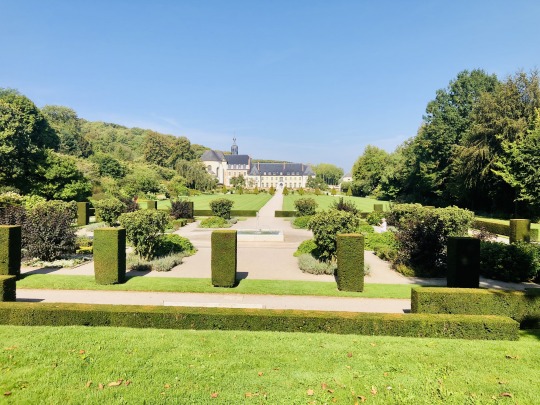
View On WordPress
#5000 soorten#8 hectare#842 graven#Argoules#Baie de Somme#Chinese begraafplaats#dokwerkers#Frankrijk#Jardins de Valloires#Nolette#Spaanse griep
0 notes
Text
In just one month, approximately 462 hectares (4.6 million m²) of woodland, "notably pines and oaks, as well as around 20 hectares of centuries-old olive groves," have been destroyed by Israeli airstrikes, said Georges Mitri, Director of the Land and Natural Resources Programme at Balamand University.
Since the escalation of tensions between Hezbollah and the Israeli army on Oct. 8, the latter has used white phosphorus to set fire to forests and fields in border areas. The 1980 Geneva Convention, which Israel has not signed, prohibits the use of white phosphorous on civilians and in civilian areas due to its devastating effects on humans, animals and the environment.
[...]
Amid the ongoing economic crisis, the attacks targeting olive groves ahead of harvest season have a major negative impact on the local economy in the area.
"Traditionally, people gather around the olive trees, harvest their crops, press their oil together... A big part of their lives is being lost," lamented Younes.
“The olive trees being burned are centuries old," he pointed out. “If we were to replant them today, how long would it be before these fields became productive?” Giving an estimate of the economic losses attributed to the daily fires in the South, Mitri put the figure at nearly 20 million dollars.
In the long term, Younes is particularly concerned about the environmental impact of the phosphorus bombs. "We have no choice but to wait until the end of hostilities before assessing the situation on the ground," he said. In Younes’ view, the greater the rate of absorption of phosphorus into the soil and water, the greater the risk of dramatic long-term consequences on Lebanon’s environment.
I'll add here that southern Lebanon has never fully recovered from 2006. There are still unexploded cluster bombs in the ground, killing and maiming people. There is still chemical contamination. The economic impact on agriculture has never been fully recouped. The cancer rates are still elevated and unaddressed. The labor structure and which crops are grown changed after 2006 and have never reverted. I remember weeping watching the bombing of Gaza in 2021 as I was in the middle of writing a paper about the long term legacies of the July War in Lebanon, with these additional long-term violences of the bombing at the forefront of my mind along with the immediate deaths and tragedies. This is a horrifying compounding of an existing injury, at a time when Lebanon is in economic free fall and (as the article also explains) in the middle of fire season, and with firefighters unable to do much because the area is. being bombed.
841 notes
·
View notes
Text

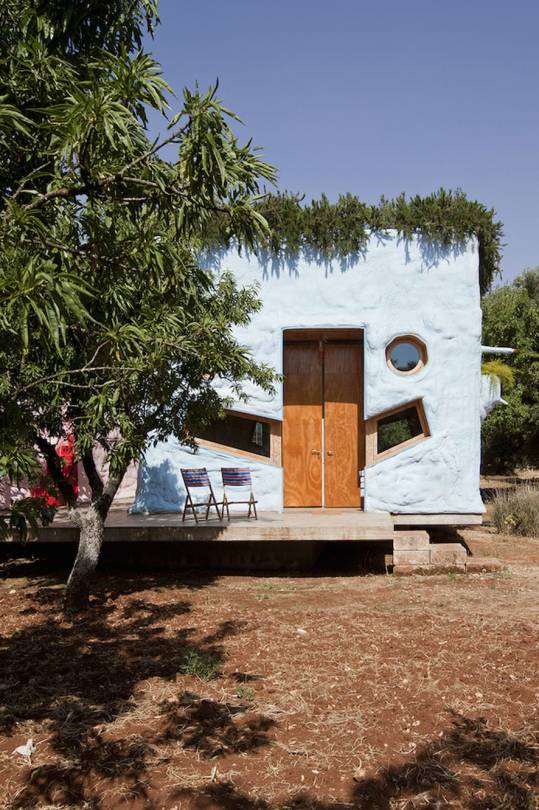



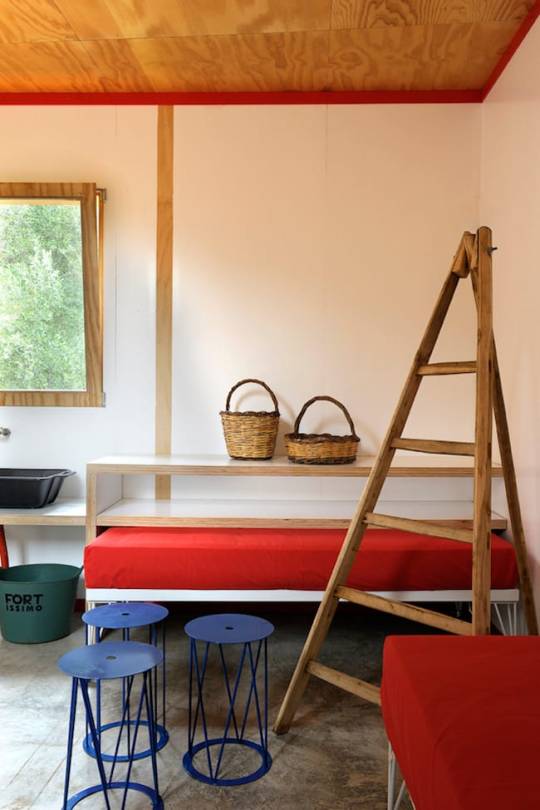
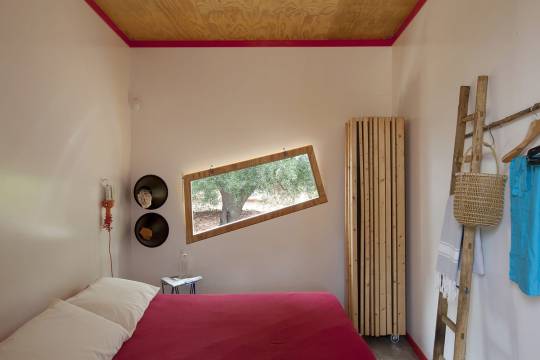

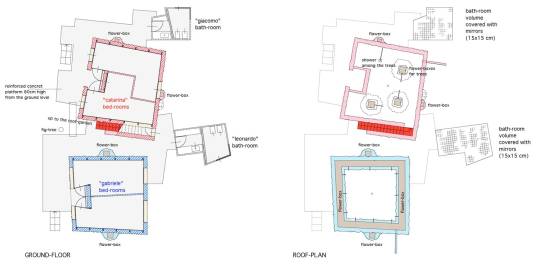

Gaetano Pesce (8 November 1939 – 3 April 2024)
Pescetrullo, Carovigno, Italy,
Italian artist Gaetano Pesce was commissioned to interpret a hectare of olive trees in Carovigno countryside, in Puglia, Italy by creating a series of playful holiday homes.
Commissioned by Caterina Tognon of Caterina Tognon Arte Contemporaneo, the two mini houses are the portrait of the gallerist and her husband with faces full of expression – pink for her and blue for him.
Together with architects Gabriele Pimpini and Cosimo Cardone of Studio Talent, Gaetano Pesce created a playful example of contemporary architecture in a context saturated in history, effortlessly straddling the worlds of visual art and contemporary design.
The houses are clad in tinted polyurethane, a versatile material readily used for insulation purposes. Pesce’s work has often concentrated on the research of new materials, having experimented with polyurethane since the 1970s.
‘Pescetrullo’ has become one of the most innovative examples of polyurethane used in a permanent architectural setting, which affords the houses with passive thermal properties. As a result, they require virtually little heating during winter and conversely, cooling in summer.
Rest in Power !
#art#design#architecture#nature#interior design#retreat#forms#sculpture#polyurethane#gaetano pesce#rip#pescetrullo#italy#carivigno#pink#blue#sustainability#sustainable architecture#tiny house#tiny home#studio talent#cabin
103 notes
·
View notes
Text
"Two so-called “Celtic rainforests” in the UK are to be restored with a mixture of native planting and natural reforestation.
The hope is that they will provide rich habitats for dozens of species, improve groundwater quality and flood prevention, and allow residents and tourists to experience an exceptionally rare forest biome called temperate rainforest.
The most famous and largest temperate rainforests on Earth are found in the US states of Oregon and Washington, along Brazil’s Atlantic coast (known as the Atlantic Forest), and on New Zealand.
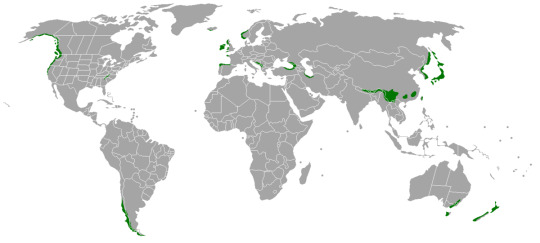
Pictured: Map of the global distribution of temperate rainforests. Source: Wikipedia
Britain, especially Wales, would have featured a certain amount of these Celtic rainforests in areas that experience high moisture content coming off the ocean, and low variations in annual temperatures.
One such place is Creg y Cowin on the Isle of Man, where 28 hectares (70 acres) of native Celtic rainforest will be planted by hand, and another 8 hectares (20 acres) left to regenerate naturally.
The Manx Wildlife Trust will be responsible for the project, and it anticipates “the return of oakwood dwellers such as wood warbler, pied flycatcher, and redstart, as well as raptors, owls, and woodland invertebrates.”
Historic agricultural dwellings called “tholtans” will be left on the landscape for their historical and cultural significance.
Elsewhere, in Gwynedd, North Wales, another 40 hectares (112 acres) of Celtic rainforest will be raised via a mixture of native planting and regeneration. The selected site is the peak and slopes of Bwlch Mawr, near the university town of Byrn Mawr.
“There’s real momentum now to restore and expand our amazing temperate rainforests, and it’s brilliant to see the Wildlife Trusts advancing their plans,” Guy Shrubsole, environmental campaigner and author of The Lost Rainforests of Britain, told the Guardian in the wake of the announcements."
-via Good News Network, 4/7/23
#uk#united kindgom#england#wales#gwynedd#rainforest#forest#temperate rainforest#rewilding#celtic#ecosystem#good news#hope
571 notes
·
View notes
Text
The externalization of the ecological burden from the core to the periphery takes different forms. One of these can be seen in the unequal access to wealth through the appropriation of energy sources, the extraction of materials—especially minerals—, and the cheapening of the labor force in the periphery for the production and maintenance of imperial modes of living in the core. Recent studies have calculated that the rich countries are responsible for 74% the world’s excess use of materials (USA, 27%; EU, 25%), while China for 15% and the rest of the Global South for barely 8%. Another study has put the net appropriation by the Global North of labor and resources from the Global South between 1990 and 2015 at 12 billion tons of raw materials, 822 million hectares of land, 21 exajoules of energy, and 188 million person-years of labor, equivalent to 10.8 trillion dollars. Hence, the drain would amount to $242 trillion in profits for the Global North, or a quarter of its GDP.
The effects of this imperial drain are also evident in the disproportionately unequal energy consumption between a wasteful Global North and a South with billions of people without access to the minimum energy needed for the production and reproduction of social life. An estimated 3 billion people have no access to clean cooking fuels and only 72% of the world’s population will have access to clean cooking fuels and technologies by 2030, whereas 759 million have no access to electricity and an estimated 660 million will remain without it until 2030.
Alejandro Pedregal and Nemanja Lukić, Imperialism, Ecological Imperialism, and Green Imperialism: An Overview
48 notes
·
View notes
Text
Why Panama is on Strike

From afar the Panama protests look like maybe a bunch of hypersensitive eco-fools or maybe like those people who think throwing paint on museums is making any difference instead of going directly to the companies.
The reality is that Panama is protesting way more than just the “contract”. But, let's start with the contract.
First, the company can own Panama by owning land property of the Panama state" inside or outside the 17,000 hectares from what was licensed.” This means that the ANATI (the National Authority of Land Administration) HAS to give it to the mining company with no setbacks.
The mine puts danger around 8 countries of Centroamerica with already reported 200 environmental damages
If the company wants to own private lands that are located inside or outside of hectares of the land that was licensed. The company can own the land and pay nothing in exchange, with no questions.
The contract was done with random permits without the proper process of acquisition.
The contract promises to give Panama a very small quantity of payment to Panama when Panama already spends millions of dollars on the state. This means the company will give Panama less money than what Panama already invests in the country. So we are selling parts of Panama for less than what we already invested.
Panama's government is allowing a foreign company to NOT pay 70% of their taxes during the first 10 years of copper extraction.
The community of Donoso (where the mine is located) says they see tons of copper trucks going out every week and at the same time they complain they haven't seen improvements in their community. Ejm: railroads, electricity.
The company threatens with an international lawsuit of millions of dollars if Panama doesn't sign the contract. But if the company fails to comply with the contract, claims it will only pay 70 million dollars (Which is less than what they make extracting copper from the mine).
The contract has a clause that makes an actual law. The contract will reign according to the laws of Panama, except if a law looks inconsistent. In other words, if Panama makes a law that prohibits mining or a law that obliges them to pay taxes, because of their contract it will not apply at all because of that clause.
The joke was that the president signed the contract in less than 3 hours.
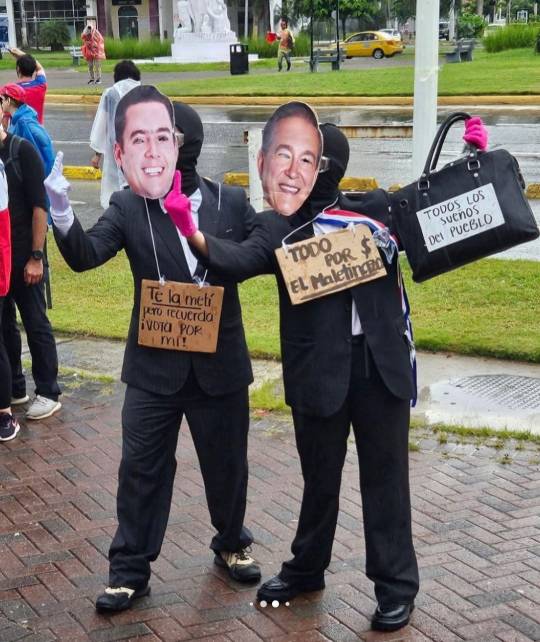
Now, going to the other complaints of the population. Panama already has tons of issues and complaints that are not resolved. These issues have put the whole country on the verge of exploitation.
In September, there were massive protests in several parts of the country because of the sexual assault of the minor Madeleine at the hands of the National Juvenile Assembly. To keep it short. Every year the country makes a national juvenile assembly and this kid was from outside the city representing her district. She ate and drank with each political party and told a classmate to check on her because her water tasted like medicine. The kid hours later was attended by an ambulance with no notification of this to her mom. After this, the kid was behaving erratic and paranoid with a location on her phone that wasn't at the hotel in Panama where all the kids were. The other claims of the event were that all the minors had those dinners with the political parties representatives and on those tables were "Gringos" (foreign European or North American people). Why those kids were sharing tables with gringos in the first place?
When the kid arrived from the trip, she was in a catatonic state and with constant PTSD attacks. There's still no justice or any trace of who were the ones who committed those crimes, and even no accountability by the MEDUCA (The Ministry of Education of Panama).
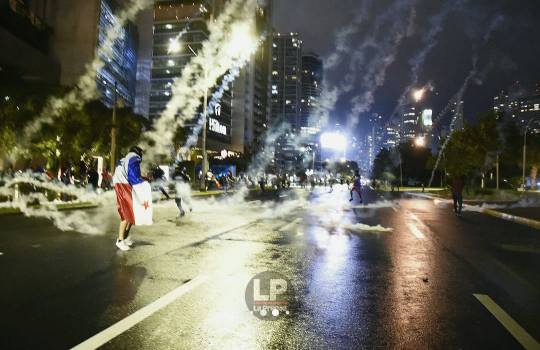
It is not the first time since such an event happened at the hands of the state. In 2021, we had another state scandal when it was reported that one of the deputies ( Arquesio Arias) of the national assembly raped several women in the indigenous Kuna Yala region. Of course, you can imagine he was dismissed from the charges and when that announcement was published, one of the victims tried to kill herself and got into the ER.
Then there are the deputies who name some of their relatives to the state payroll and don't even work in the state but take tons and tons of money monthly. Meanwhile, the oncologico hospital keeps getting shortages of injections and gloves.
Panama is considered an international hub, one of the richest countries of Latin America and still we struggle with poverty and access to vital things for the population, why? Because people of the state and international companies steal the money, they sometimes build roads and bridges and the costs are higher to the price from the real costs of those constructions, for example, the Odebretch scandal. They charge lots of money, so they can bribe some of the money to both parties (the construction company and the one who is soliciting the construction.
But then again bribing is part of the panamenian culture as we say "juega vivo", bribing the police, the hospital, and the system is all about money and taking advantage of situations as they come even if it is illegal.
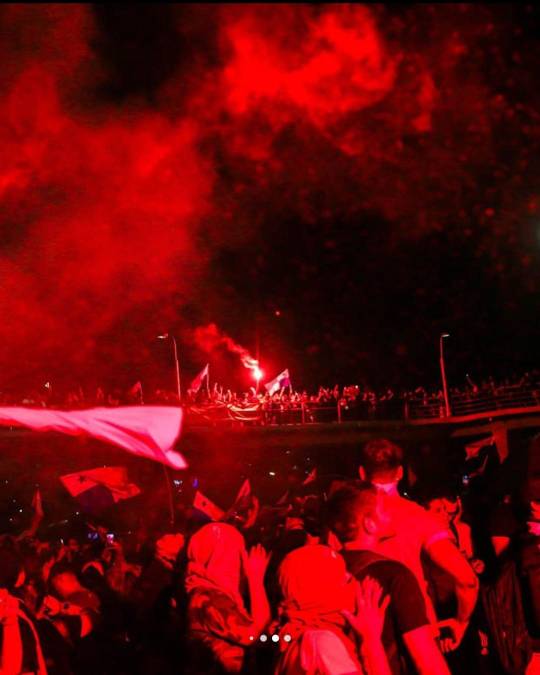
Is funny we are all fighting for water, Well my friends here where I am with the famous "Panama Canal" that provides us with most of our income as a nation while having lots of rivers and geographically we are surrounded by both the Pacific and the Atlantic Ocean, having all of that I get shortages and cuts of water for more than 6 times a month.
This week, the IDAAN (the company that provides water to the whole nation), has been making shortages all week. My family and I have been saving water tanks each day because of the shortages. I keep joking internally that I have a toxic relationship with the IDAAN since we kind of got used to this and the irony is that while the entire country struggles with the shortages they still sign a contract that will even affect the water flow to the Panama Canal in the long term.
The protests are not just because of the damage to nature is that the government sold us to a foreign Canadian company that has shareholders from the US and China to exploit us leaving us with nothing.
My biggest worry right now is that our current president is sick, the whole country knows he has cancer and during his last speeches, he has been looking like a corpse with now rumours of him leaving the country to intern himself to a hospital in Houston Texas. If he dies then probably the vice president has to take charge, but he has been missing since the protests and people HATE him. So yeah, Panama is on the brink of chaos and if that happens .. well

#panama#latam#latinoamerica#canada#world news#protests#global news#panama canal#panama city#corrupción#curruption#mining#climate change#environment#nature#united states#latino america#police brutality
116 notes
·
View notes
Text
Ancient Roman 'spike defenses' made famous by Julius Caesar found in Germany
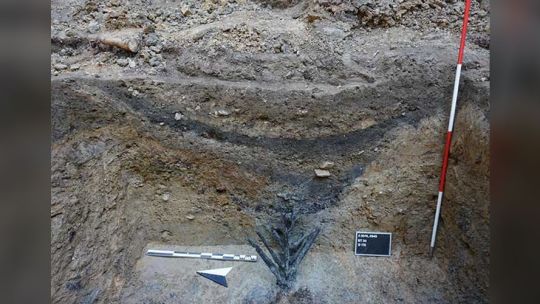
In 52 B.C., Julius Caesar used an ingenious system of ditches and stakes to defend his soldiers from an encroaching Gallic army in modern-day central France. More than two millennia later, archaeologists have discovered the first preserved example of similar defensive stakes, which likely protected an ancient silver mine.
A student team made the unprecedented discovery in the area of Bad Ems, halfway between the present-day cities of Bonn and Mainz in Germany, on the former northern border of the Roman Empire.
Archaeologists have been working in the area of Bad Ems since the late 19th century. Early excavations yielded processed silver ore along with wall foundations and metal slag, so researchers believed that they comprised smelting works dating to the early second century A.D. But in 2016, a hunter noticed odd crop formations and told archaeologists at Goethe University, who later found that the area hosted a 20-acre (8 hectares) double-ditched Roman camp with the remains of around 40 wooden watchtowers. Read more.
336 notes
·
View notes
Text



Mosey On with the Mojave Desert Tortoise
Also known as the California desert tortoise, or more simply the desert tortoise, Gopherus agassizii is one of the few tortoise species native to North America. As its name implies, it is found only in the Mojave and Sonoroan deserts, from northern Mexico into the southwestern United States; there it is the state reptile of California and Nevada. Their habitat consists mainly of of desert scrub, where temperatures can reach over 60 °C (140 °F); however, in the southern reaches of its range, the desert tortoise can also be found in tropical deciduous forests.
To beat the heat, G. agassizii digs burrows where they can rest when its too hot or too cold to forage, and where they can aestivate during the hottest months of the summer and hibernate in the winter. These burrows can be quite extensive, reaching 10 m (32 ft) long, and up to 25 tortoises may share the same burrow. Individuals will often dig out several burrows in their territory, which can range anywhere from 3 to 25 hectares (7 to 61 acres). Many of these burrows will also become homes for other animals, including rattlesnakes, gila monsters, squirrels, burrowing owls, and quail.
Like all tortoises, the Mojave desert tortoise is herbivorous. Most of its food is grass, but due to the limited choice in the desert they may also consume wildflowers, shrubs, and cacti-- both fruits and new growth. Due to their hard shells, this species has few predators as adults, but hatchlings are vulnerable to foxes, coyotes, birds of prey, and gila monsters.
Very little rain falls in the desert, and so the desert tortoise is well adapted to do without; the species stores up to 40% of its body weight in water in its bladder, to be absorbed later. Individuals will also dig shallow 'watering holes' in the ground, to be visited after rainfall. G. agassizii also gets much of its water content from its diet, and can go up to a year without drinking.
Desert tortoises typically mate in the spring, from March to May, though mating can continue until autumn. Males seek out and fight each other for access to females, typically by ramming each other or attempting to flip each other over. However, this species is also one of the few known to engage in homosexual activity, particularly between males. Because this is not a species that mates for life, or maintains strict social hierarchies, the purposes of this intercourse is unknown.
Females can store sperm for up to eighteen months, and typically lay their eggs in the following year from May to July in clutches of 3 to 8. These eggs are laid in a deep nest dug into the ground, and take 90 to 135 days to hatch. Young emerge in the fall, and receive no parental care. If they survive, individuals may take between 10 to 16 years to become fully mature, and can live to be 80 years old.
Desert tortoises are well adapted to blend into their environments. The shell is typically a brown or dull yellow, while the body is tan or dusty grey. There is little difference between males and females, save that males are slightly bigger and have a concave plastron (lower shell) to accommodate mounting onto a female. The species is medium sized, ranging between 11 to 23 kg (24.23 to 50.66 lb) in weight and 25 to 36 cm (10 to 14 in) in length.
Conservation status: The IUCN has ranked the Mojave desert tortoise as Critically Endangered. Their primary threats include habitat fragmentation and loss, predation by feral dogs, and road mortality. The population is estimated to have declined by 90% since the 1980s. However, conservation programs are being implemented to preserve critical habitat, and several zoos and conservancies have captive breeding programs for the species.
If you like what I do, consider leaving a tip or buying me a ko-fi!
Photos
Dana Wilson
Bruce D. Taubert
Sandra Leander
#mojave desert tortoise#Testudines#Testudinidae#gopher tortoises#tortoises#turtles#reptiles#deserts#desert reptiles#scrubland#scrubland reptiles#central america#north america#southern north america#animal facts#biology#zoology
64 notes
·
View notes
Text
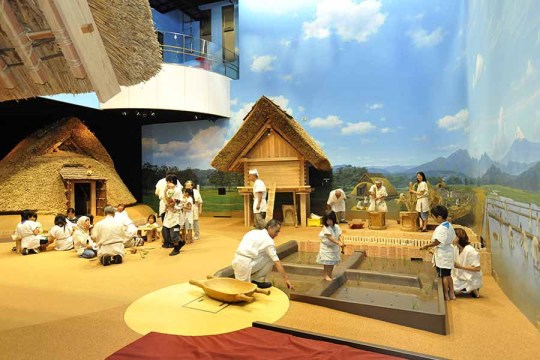
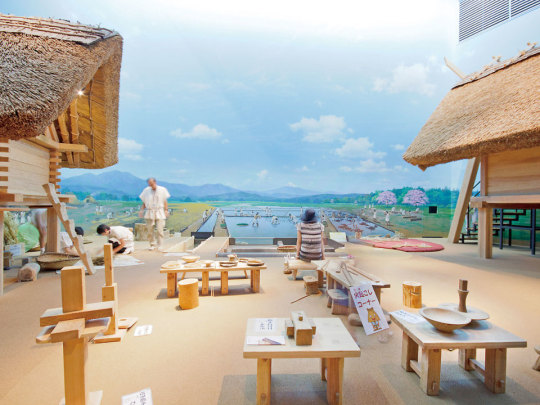

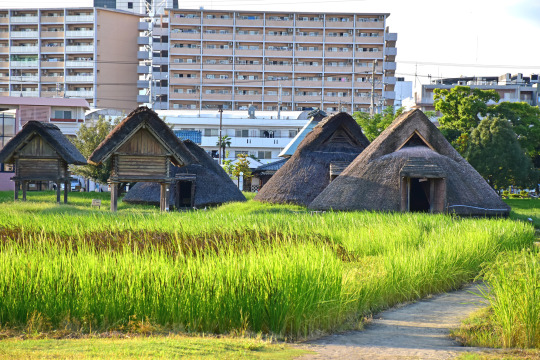
Sean bienvenidos japonistasarqueológicos a una nueva entrega de arqueología japonesa, en la cual hablaremos de Ruinas de Toro, una vez dicho esto pónganse cómodos que empezamos.
-
Ruinas de Toro, se localizan en la ciudad de Shizuoka, en la región de Chūbu, se construyeron en el periodo Yayoi y continuaron desde finales de dicho período e incluso se usaron el período Kofun siglos I al siglo V, a pesar de que fueron dañadas por las inundaciones.
-
En la publicación anterior hablamos, de que las ruinas fueron descubiertas en plena 2ww en 1943, lo que corresponde a la era showa, ya que se estaba construyendo, una fábrica de municiones para fabricar hélices para aviones de combate y accidentalmente encontramos objetos de barro y madera en el suelo, desde entonces se excavó hasta los años 1999.
-
Para continuar nuestro viaje por la arqueología de la posguerra, nos vamos a trasladar a la década de 1947, fue cuando se realizaron las excavaciones en masa hasta mitad del siglo pasado, en la que se descubrieron: 12 viviendas, 2 almacenes y 8 hectáreas de arrozales, del periodo Yayoi que datan de hace 2000 años de antigüedad.
-
También aparecieron: campanas de bronce, el lugar se reconstruyo en 1951. Por el motivo de una autopista en 1965 salieron más restos arqueológicos a lo que se le llama arqueología de salvamento, al final de 1999, se actuaron más excavaciones en otras partes del país en Kyushu, kinki y Tohoku hasta 2003.
-
Espero que os haya gustado os deseo una buena semana y nos vemos en próximas publicaciones del país del sol naciente.
-
日本の考古学者の皆さん、ようこそ!今回は登呂遺跡についてお話しします。そう言ったら、くつろいでいただき、さっそく始めましょう。-中部地方の静岡市にある登呂遺跡は、弥生時代に築かれ、弥生時代後期から続き、1世紀から5世紀にかけての古墳時代にも、洪水で被害を受けながらも利用されていた。-前号では、昭和に相当する2ww中頃、戦闘機のプロペラを製造する軍需工場が建設されている最中に発見され、偶然、土や木のオブジェが地面に落ちていたことを紹介したが、その後、平成11年代まで発掘調査が行われた。-戦後考古学の旅を続けるために、1947年の10年間に移り、前世紀半ばまで大規模な発掘調査が行われ、2000年前の弥生時代の住居12棟、倉庫2棟、水田8ヘクタールが発見された。-銅鐸も発見された。遺跡は1951年に再建された。1965年の高速道路建設により、さらに多くの遺跡が発掘され、サルベージ考古学と呼ばれている。 1999年末には、2003年まで九州、近畿、東北の他の地域でも発掘調査が行われた。-お気に召していただけたなら幸いである。良い一週間をお過ごしください。
-
Welcome Japanese archaeologists to a new installment of Japanese archaeology, in which we will talk about the Toro Ruins, and once we have said that, make yourselves comfortable and let's get started.
-
Toro Ruins, located in the city of Shizuoka, in the Chūbu region, were built in the Yayoi period and continued from the late Yayoi period and were even used in the Kofun period from the 1st to the 5th century, although they were damaged by floods.
-
In the previous publication we mentioned that the ruins were discovered in the middle of the 2ww in 1943, which corresponds to the showa era, as a munitions factory was being built to manufacture propellers for fighter planes and we accidentally found objects of clay and wood on the ground, since then it was excavated until the 1999s.
-
To continue our journey through post-war archaeology, we will move to the decade of 1947, when mass excavations were carried out until the middle of the last century, in which 12 dwellings, 2 warehouses and 8 hectares of rice fields were discovered, from the Yayoi period dating back to 2000 years ago.
-
Also discovered: bronze bells, the site was rebuilt in 1951. Due to the construction of a motorway in 1965, more archaeological remains were unearthed, which is called salvage archaeology. At the end of 1999, further excavations were carried out in other parts of the country in Kyushu, Kinki and Tohoku until 2003.
-
I hope you liked it, I wish you a good week and see you in future publications from the land of the rising sun.
-
More information: https://www.shizuoka-toromuseum.jp/zhcn/
#japan#shizuokacity#shizuokaprefecture#ToroRuins#showaperiod#chūburegion#archaeology#unesco#yayoiperiod#prehistory#kofunperiod#日本#静岡市#静岡県#登呂遺跡#昭和#中部地方#考古学#ユネスコ
35 notes
·
View notes
Text
California’s Yurok Tribe, which had 90% of its territory taken from it during the gold rush of the mid-1800s, will be getting a slice of its land back to serve as a new gateway to Redwood national and state parks visited by 1 million people a year.
The Yurok will be the first Native people to manage tribal land with the National Park Service under a historic memorandum of understanding signed on Tuesday by the tribe, Redwood national and state parks and the non-profit Save the Redwoods League.
The agreement “starts the process of changing the narrative about how, by whom and for whom we steward natural lands”, Sam Hodder, president and CEO of Save the Redwoods League, said in a statement.
The return of the 125 acres (50 hectares) of land – named ’O Rew in the Yurok language – more than a century after it was stolen from California’s largest tribe is proof of the “sheer will and perseverance of the Yurok people”, said Rosie Clayburn, the tribe’s cultural resources director. “We kind of don’t give up.”
For the tribe, redwoods are considered living beings and traditionally only fallen trees have been used to build their homes and canoes.
“As the original stewards of this land, we look forward to working together with the Redwood national and state parks to manage it,” Clayburn said. “This is work that we’ve always done, and continued to fight for, but I feel like the rest of world is catching up right now and starting to see that Native people know how to manage this land the best.”
The property is at the heart of the tribe’s ancestral land and was taken in the 1800s to exploit its old-growth redwoods and other natural resources, the tribe said. Save the Redwoods League bought the property in 2013 and began working with the tribe and others to restore it.
Much of the property was paved over by a lumber operation that worked there for 50 years and also buried Prairie Creek, where salmon would swim upstream from the Pacific to spawn.
Plans for ’O Rew include a traditional Yurok village of redwood plank houses and a sweat house. There also will be a new visitor and cultural center displaying scores of sacred artefacts from deerskins to baskets that have been returned to the tribe from university and museum collections, Clayburn said.
It will add more than a mile (1.6km) of new trails, including a new segment of the California Coastal Trail, with interpretive exhibits. The trails will connect to many of the existing trails inside the parks, including to popular old-growth redwood groves.
The tribe had already been restoring salmon habitat for three years on the property, building a meandering stream channel, two connected ponds and about 20 acres (8 hectares) of floodplain while dismantling a defunct mill site. Crews also planted more than 50,000 native plants, including grass-like slough sedge, black cottonwood and coast redwood trees.
Salmon were once abundant in rivers and streams running through these redwood forests, But dams, logging, development and drought – due in part to the climate crisis – have destroyed the waterways and threatened many of these species. Last year, recreational and commercial king salmon fishing seasons were closed along much of the west coast due to near-record low numbers of the iconic fish returning to their spawning grounds.
The tribe will take ownership in 2026 of the land near the tiny northern California community of Orick in Humboldt county after restoration of a local tributary, Prairie Creek, is complete under the deal.
A growing Land Back movement has been returning Indigenous homelands to the descendants of those who lived there for millennia before European settlers arrived. That has seen Native American tribes taking a greater role in restoring rivers and lands to how they were before they were expropriated.
Last week, a 2.2-acre (0.9-hectare) parking lot was returned to the Ohlone people where they established the first human settlement beside San Francisco Bay 5,700 years ago. In 2022, more than 500 acres (200 hectares) of redwood forest on the Lost Coast were returned the InterTribal Sinkyone Wilderness Council, a group of 10 tribes.
The ’O Rew property represents just a tiny fraction of the more than 500,000 acres of the ancestral land of the Yurok, whose reservation straddles the lower 44 miles (70km) of the Klamath River. The Yurok tribe is also helping lead efforts in the largest dam removal project in US history along the California-Oregon border to restore the Klamath and boost the salmon population.
The Redwoods national park superintendent, Steve Mietz, praised the restoration of the area and its return to the tribe, saying it is “healing the land while healing the relationships among all the people who inhabit this magnificent forest”.
#excerpts#yurok tribe#national parks#California#environment#indigenous rights#tribal rights#land back#national park service#ecosystems#biodiversity#salmon
26 notes
·
View notes
Text
Five First Nations in B.C. have reached a historic settlement with both the provincial and federal governments of $800 million and 44,266 hectares of land.
The settlements resolve long-standing claims that the First Nations did not receive all the lands owed to them under Treaty 8, which they signed in 1899, government officials said.
The monetary sum of $800 million was stated by Canada’s Minister of Crown-Indigenous Relations Marc Miller in the question period.
“This was withheld for proactive reasons,” Miller said. “There is extreme reticence in communities about the effect of a cash influx and the stigma that occurs with the perceived windfall this could be.” [...]
Continue Reading.
Tagging: @politicsofcanada
#cdnpoli#First Nations#Indigenous activism#Indigenous politics#British Columbia#Indigenous sovereignty
123 notes
·
View notes
Text
IT HAS PRATICALLY NOT RAINED IN 2 FUCKING YEARS IN FRENCH PYRENEES ???????? 😨 holy christ I had no idea it was that bad !!!
the article is in french but here's a translated part to share how bad things are getting there :
"With only 153 millimetres of rain over the last five months, the departement has recorded a precipitation deficit of almost 60%, according to Météo France. This winter drought "worthy of the end of August", according to the public agency, has plunged orchards and vineyards into a state of intense water stress, while groundwater tables are at their lowest. Recent heat records - 25.6°C in Perpignan on February 4 - have not helped matters. During the winter, the trees go into vegetative rest," recalls the winemaker. Except that for an apricot tree to rest, it takes eight hundred hours at less than 8°C. That's a long way off. Without rain within six months, "everything's dead", he prophesies. And that's not an exaggeration: even before these two hot, arid years, the 20,000 hectares of vines in the Pyrénées-Orientales region were in structural crisis, and climate change had already caused yields to plummet."
#climate emergency#france#climate change#drought#global warming#agriculture#wine#bee tries to talk#upthebaguette#french side of tumblr
19 notes
·
View notes
Text



Gaetano Pesce (8 November 1939 – 3 April 2024)
Pescetrullo, Carovigno, Italy,
Italian artist Gaetano Pesce was commissioned to interpret a hectare of olive trees in Carovigno countryside, in Puglia, Italy by creating a series of playful holiday homes.
Commissioned by Caterina Tognon of Caterina Tognon Arte Contemporaneo, the two mini houses are the portrait of the gallerist and her husband with faces full of expression – pink for her and blue for him.
Together with architects Gabriele Pimpini and Cosimo Cardone of Studio Talent, Gaetano Pesce created a playful example of contemporary architecture in a context saturated in history, effortlessly straddling the worlds of visual art and contemporary design.
The houses are clad in tinted polyurethane, a versatile material readily used for insulation purposes. Pesce’s work has often concentrated on the research of new materials, having experimented with polyurethane since the 1970s.
‘Pescetrullo’ has become one of the most innovative examples of polyurethane used in a permanent architectural setting, which affords the houses with passive thermal properties. As a result, they require virtually little heating during winter and conversely, cooling in summer.
Rest in Power !
#art#design#stairwell#architecture#stairway#staircase#interiors#staircases#stairs#sculpture#gaetano pece#rip#italy#forms#polyurethane#pescetrullo#pink#blue#cabin#tiny house#tiny home#retreat#carovigno
16 notes
·
View notes
Note
I’m very curious about your vineyard AU!
I originally talked about it here (also called champagne AU), and since then it has gained a Words doc and it is somewhat outlined but I still haven't written much for it.
Obi-Wan is a winegrower who makes champagne form start to finish, he grows the vines, makes the champagne and sells it.
(Why champagne? Because that's what my grandparents did so I know more about it than about wine.)
In September (usually) the winegrowers hire workers for about a week or two to harvest the grape. (Where I worked they hire between 10 and 15 people for one week to harvest 4 hectares (almost 10 acres)), so here Anakin is a seasonal worker that comes back every year for the harvest, and year after year he and Obi-Wan fell in love.
I'm planning on doing 8 or 9 chapters: one for every day of the harvest during which they'll pine and flirt a lot then finally get together, and an epilogue (though I might shorten it, I'm not sure I have something interesting to add to every day, it's rather repetitive work to cut grapes all day lol)
Here's the only thing that I have actually written (unedited), which is the very beginning of the fic:
"It was almost that time of the year again: grape harvest. It was rather early this time, starting on the last day of august, but Anakin certainly wasn’t going to complain, an earlier harvest meant he would see Obi-Wan earlier. It had been almost a year since they had last seen each other (except for the few texts they exchanged to inform Anakin of the dates of the harvest, and to confirm that he would be there)(as if he would miss it for anything in the world). They could text each other during the year too, but Obi-Wan never did and Anakin was too worried he would find it annoying. Maybe he didn’t miss Anakin the way Anakin missed him. Maybe he didn’t count down each day until the next harvest. Or maybe he did, he was a winegrower after all, and the harvest was one of the most important part of the champagne making process, but he probably didn’t count down the days until he would see Anakin again.
Anakin wasn’t an idiot, he knew Obi-Wan liked him, as a friend, and as a good, reliable and efficient worker. But there was no way he loved Anakin. Although, in the last couple of years there had been moments where Anakin thought that maybe, just maybe, he might actually have the tiniest chance."
(From this wip tag game)
15 notes
·
View notes
Text





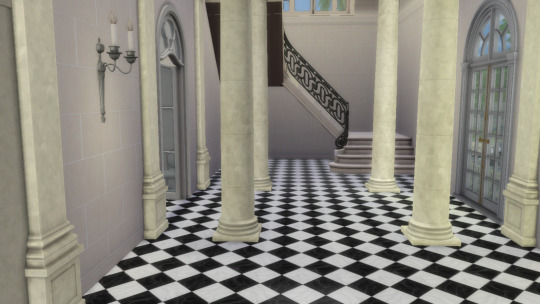






Abril country house
According to the story, after the death of Higinio Pereyra Iraola in 1899, the San Juan estate was divided among his six children. Laura, one of the heirs, received 312 hectares of the property, which was named "Abril" in honor of the month of her birth. She commissioned the architect José Mille to build a mansion. The project was completed in 1932, but it is said that it did not respect the modest owner's wishes and instead became an ostentatious palace in the French style.
As a result, Laura never climbed the stairs with wrought-iron railings or walked through the extensive checkered-floor galleries. She never sat in the library lined with wood and windows overlooking the main garden, nor did she enjoy a cup of tea by the warmth of the hand-carved marble fireplaces brought from Europe in this little Versailles that was erected in the southern area of the conurbano.
Instead, Laura left the mansion to her godson, Jorge Pereyra Iraola, who, along with his family and heirs, enjoyed it until its sale.
---------------------------------------------------------------------------------------------
This works with a 64x64 lot.
As always, you will need lots of CC for it to work properly, mostly from Felixandre, TheJim, SYB, Aggresivve Kitty, among others.
Please let me know if you like it with a comment and enjoy :)
Download https://www.patreon.com/posts/86365059?pr=true
(early access: 8/22)
#sims 4 architecture#sims 4 build#sims4#sims4palace#sims 4 screenshots#sims4play#sims 4 historical#sims4building#sims 4 royalty#sims4frencharchitecture
44 notes
·
View notes
Text
OPINION: DiliMall: Not a Mall for All

Photo credit: Lauren Nina Andres
For decades, the UP Shopping Center (SC) was a staple for the UP community. Filled with various stores from computer shops, school supplies stores, photocopying and bookbinding services, to food stalls, and beauty parlors, among others, the SC catered well to the needs of students, faculty, staff, and even residents of the campus. However, in 2018, the well-loved SC burned down, causing vendors to be displaced and its once affordable items and reliable services to no longer be easily accessible.
After the fire, the tenants experienced difficulties with relocating and rebuilding their establishments. According to an article by ABS-CBN, the University’s Business Concession Office drew lots for the affected business owners. Those that were picked were allowed to reopen in other locations on campus, such as Vinzon’s Hall, the Food Hub next to the Fine Arts Building, the Centennial Building, and the Acacia Building, among others. Some tenants were able to rebuild at the old tennis court nearby, provided by the administration as a temporary space, and others opted to reopen in Area 2. A month later, during the 1334th Board of Regents meeting held in April 2018, former UP President Danilo Concepcion announced plans for the rehabilitation of the SC into a more modern structure. And thus, “DiliMall” was born.
The move to rebuild and rebrand the SC as DiliMall was criticized by community stakeholders because the administration’s priorities seem to be misplaced as revealed in the proposed floor plan of the structure posted by the UP Diliman University Student Council (USC) last November 24, 2023. Robinsons Easymart and other known restaurants such as Mary Grace, Pancake House, and Army Navy take up the first floor, while the space given to UP vendors is found on the third floor. Not to mention, the vendors in the tennis court are at risk of being displaced once again since the space will be converted into a parking lot.
This begs the question of whether these “development plans” are truly for the benefit of the community or are merely ways for developers and businesses to capitalize on the university.
In light of this, last March 12, the “UP Not For Sale Network” was launched, consisting of various organizations namely, the USC, Shopping Center Association, UP Academic Workers Union, UP Workers Alliance, Movement for Democratic Governance, and Local College Councils. The network calls against the commercialization of DiliMall and pushes for the prioritizing of the UP Community.
DiliMall is not just the issue
DiliMall is not the first time the UP community has faced commercialization on campus. In an article by the Philippine Collegian, USC Councilor and Community Rights and Welfare Head Kristian Mendoza claimed that DiliMall is part of the implementation of the UP Master Development Plan (MDP), a land use policy approved by the Board of Regents in 2014 aiming to “proactively and systematically” develop UP’s land assets.
Before this, the UP Administration had already begun developing idle lands of the university, approving Ayala Land’s bid to convert 37.5 hectares of land into an information and technology hub in 2006—the UP Ayala Technohub.
The UP Integrated School (UPIS) community is familiar with this issue, as the old Grades 7-10 Building was replaced with the UP Town Center in 2013 by the same developer. From our 8-hectare land along Katipunan Avenue, we were moved to a building built and donated by the Ayala Corporation, a 5-structure facility with a main 4-story building, where the Narra Residence Hall once stood. The new 7-10 Building was budgeted at P180-million, from which P40-million was allotted for upgrades to the Grades 3-6 Building.
Only 10 years later, the Grades 7-12 Building is in a state of downfall, proving to be a great inconvenience and safety hazard to the UPIS community. During the Academic Year (A.Y.) 2022-2023, grades 3-12 students had to share the 3-6 Building since the structural integrity of the 7-12 Building was still being assessed. In A.Y. 2023-2024, although the 7-12 Building was cleared for use, parts of the building have been barricaded due to the degraded structure resulting in longer detours when moving from classroom to classroom and restricted movement among students, teachers, and staff.
The new Gyud Food Hub, which opened in December 2022, posed similar concerns as the development of DiliMall with failing to prioritize UP vendors that have long served the community. In this case, vendors displaced from the Main Library received a handwritten note from President Concepcion assuring them slots in the new facility. However, contrary to the administration’s promise, these vendors were not granted a space in the hub.
Moreover, the implementation of these establishments serves to exacerbate class disparity in the university by focusing on businesses catering to higher-income consumers that exclude students and lower-income community members. Again, the firms affected by the 2018 fire incident in the Shopping Center are still grappling with getting proper spaces allocated among them where established businesses have taken precedence over them.
Additionally, vendors and business owners are not the only ones being displaced by UP’s development plans, but as well as its residents. Homes and residences were demolished and claimed in accordance with the UP MDP. Some of the affected communities were Pook Village C, residents located at the UP Arboretum in 2020, and farmers from Pook Aguinaldo in 2021. These communities and families have been residing in the said areas for decades without any issues, only for them to be evicted from their homes; their livelihoods taken away to give space for “sustainable” infrastructure projects, without proper plans for relocation.
This further demonstrates how commercialization discriminates against marginalized individuals within the UP Community and society.
Additionally, the commercialization in UP Diliman may lead to the phase-out of small local businesses and vendors that have long been an integral part of the community. This greatly affects not only their livelihood but also the culture and diversity of the university’s environment.
Concerns and detractors from the UP community continue to rise towards this issue as stakeholders of the community are negatively affected and neglected by the university. Examples of affected sectors are dormitories, classrooms, and faculty buildings, all of which are experiencing problems with their space, functionality, and facilities.
It is important to maintain and improve the academic environments of UP as this will keep the university’s name, provide equal learning opportunities, liaise with the communities, and secure student wellbeing. These areas are fundamental in the institution for they facilitate learning and contribute towards its success as a top-ranked higher learning institution. To uphold the eminence that characterizes UP, we need to give priority to the conservation and upgrading of academic spaces.
Commercialization for who?
The university insists that converging with the private sector is beneficial as income generated from these rented spaces can be directed to academic and community needs. However, based on the 2016 audit report by the Commission of Audit, it is revealed that Ayala Land Inc. has 209.2-million pesos worth of unpaid obligations to UP. The amount comprises underpayments in rent income and late interest payments for the spaces at UP Technohub and UP Town Center. This raises the question as to why the university continues to commercialize its land when the previous corporation failed to keep up with its lease agreements.
Nevertheless, the university is still in dire need of other means of income. Government funding shortages can be pointed as to why the university insists on commercializing its land assets. Despite the fact that UP’s 2024 budget increased by P508-million, amounting to P24.771-billion this year, 80% of the funds were allocated for the university’s infrastructure projects. Sectors such as utility and maintenance incurred a P1.3-billion cut, and the budget for university operations was reduced for the new budgetary focus. According to an article by the Philippine Collegian, even if the funds for infrastructure were excluded, UP still suffered a P873-million cut. Additionally, P943-million will be cut for the provision of higher education services—which may result in fewer resources allocated to quality education for students. Taking all of this into account, it can be understood why commercialization may appeal to UP—as the university is getting increasingly pressured by almost all sides of its community to take action for its funding shortfalls.
Even so, our integrity as a public education and service institution must come first. It must be emphasized that UP serves as the nation’s model for quality education, and when we allow commercialization and privatization to be fostered within our institution, it may invite other educational institutions in the country to also be dependent on for-profit provisions. Reinforcing this notion, the presence of privatized businesses as stakeholders in the university may greatly influence university decisions, academic programs, and student policies.
In the end, UP must decide between prioritizing the community's interests or pursuing commercialization at the expense of its constituents. However, we’ve experienced the effects of this firsthand: the building we’ve sacrificed for profit forced us to settle for our current building–one that is deteriorating, crumbling piece by piece. We must ask ourselves: are we going to let this happen again? If the university chooses to commercialize its spaces for funding, attention, and care for its students and community must still be sustained.
Therefore, we need to oppose the commercialization of spaces and services in our university, assert our right to quality basic academic spaces and student facilities, stand with the vendors, employees, and families affected, and call on the administration to negotiate better terms with business partners—terms that put the benefit and interest of the UP community first. Furthermore, it is important to stress the need for more funding from the government to be able to run UP’s essential activities and programs successfully. We should come together to protect the good name of our institution and meet its responsibility to the UP community and the Filipino people.
// by Kela Alcantara, Grace Gaerlan, Xia Mentes
Sources:
Abello, L. T. (2024, February 6). UP students protest increasing commercialization of campus spaces. Philstar.com. https://www.philstar.com/headlines/2024/02/07/2331536/students-protest-increasing-commercialization-campus-spaces
Abello, L. T. (2024, March 12). UP community on ‘DiliMall’ opening: ‘Do not commercialize the services to the people’. Manila Bulletin. https://mb.com.ph/2024/3/12/up-community-on-dili-mall-opening-do-not-commercialize-the-services-to-the-people-1
Chua, C. (2022, July 6). UP’s Proposed 2023 Budget Set to Fund DaniCon’s Infra Splurge in His Last Year in Office. Philippine Collegian. https://phkule.org/article/586/ups-proposed-2023-budget-set-to-fund-danicons-infra-splurge-in-his-last-year-in-office
Daduya, J. (2023, January 28). “Nabudol kami!”: UP’s small-time vendors cry foul over Danicon’s unfulfilled promises.https://csspsinag.wordpress.com/2023/01/28/nabudol-kami-ups- small-time-vendors-cry-foul-over-danicons-unfulfilled-promises/
Gavilan, J. (2018, March 8). From photocopying services to Rodic’s: What’s inside UP Shopping Center. Rappler. https://www.rappler.com/newsbreak/iq/197714-things-to-know-up-diliman-shopping-center/
Gonzales, I. (2016, February 25). Ali reviews COA findings on unpaid obligations to UP. Philstar.com. https://www.philstar.com/business/2016/02/02/1549017/ali-reviews-coa-findings-unpaid-obligations-up?fbclid=IwAR2xWm74RVI8zYPn3EHJ9eUw0jaLyj3TMVziHv6i9RFSKZuwoHnDfz-zZsU
Lara, R. (2018). Decisions of the Board of Regents 1334th Meeting, 6 April 2018. The University of the Philippines Gazette, 49(3), 23-24. https://osu.up.edu.ph/2018/04/1334/
Lirio, A. (2023, December 24). An increase with setbacks: A look into the UP System’s 2024 budget. Tinig ng Plaridel.
7 notes
·
View notes